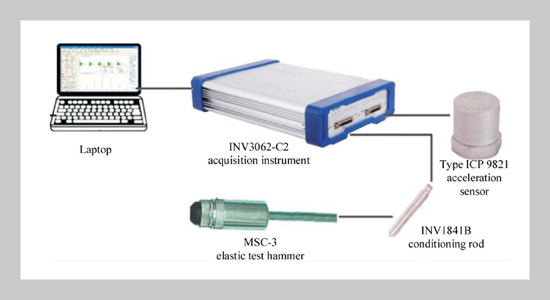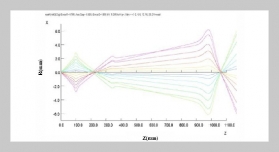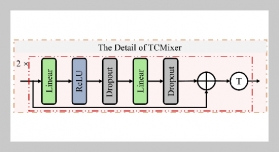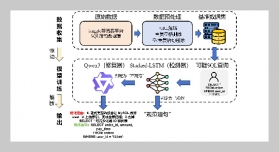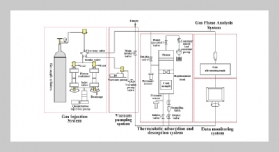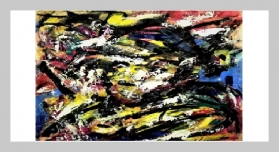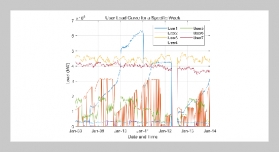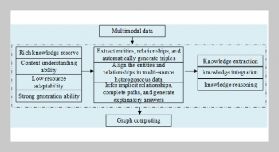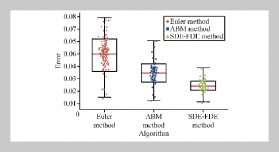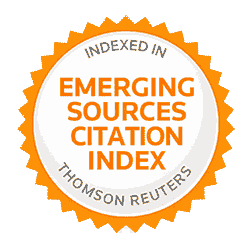REFERENCES
- [1] Chen, G., X. Zhang, and C. Zhong (2017) Design and experimental analysis of U-shaped flexure hinge with shearing damping, Journal of Vibration Measurement & Diagnosis 37, 978�983. doi: 10.16450/j.cnki.issn.1004-6801.2017.05.019
- [2] Chen,W. H., Z. R. Lu,W. Lin, et al. (2011) Theoretical and experimental modal analysis of the Guangzhou new TV tower, Engineering Structures 33, 3628–3646. doi: 10.1016/j.engstruct.2011.07.028
- [3] Zhang, G. W., J. H. Ma, Z. Chen, et al. (2014) Automated eigen system realisation algorithm for operational modal analysis, Journal of Sound and Vibration 333, 3550–3563. doi: 10.1016/j.jsv.2014.03.024
- [4] Alvandi, A., and C. Cremona (2006) Assessment of vibration-based damage identification techniques, Journal of Sound and Vibration 292, 179–202. doi: 10.1016/j.jsv.2005.07.036
- [5] Penny, J. E. T., M. I. Friswell, and S. D. Garvey (1994) Automatic choice of measurement locations for dynamic testing, AIAA Journal 32, 407–414. doi: 10.2514/3.11998
- [6] Michael, I. F., andR.C. Triguero (2015)Clustering of sensor locations using the effective independence method, AIAA Journal 53, 1388�1390. doi: 10.2514/1.J053503
- [7] Zhan, J., and Y. U. Ling (2017) An effective independence-improved modal strain energy method for optimal sensor placement, Journal of Vibration & Shock 36, 82�87. doi: 10.4028/www.scientific.net/amm.670-671.1252
- [8] Wu, Z. Y., F. J. Dai, J. Song, et al. (2007) Research on sensor optimization arrangement method in damage detection, Journal of North Western Polytechnical University 25, 503�507.
- [9] Huang, M. S., H. P. Zhu, andW. M. Li (2008) Optimal sensor placement on bridge structure based on genetic algorithm, Journal of Vibration & Shock 27, 82�86.
- [10] Tian, L., H. G. Chen, J. Zhu, et al. (2015) Optimal sensor configuration based on adaptive simulated annealing genetic algorithm, Journal of Vibration Engineering 16, 464�477.
- [11] Li, D. C., L. J. He, Y. Y. Chen, et al. (2014) Optimal strain sensor placement based on an improved particle swarm optimization algorithm, Journal of Vibration Measurement & Diagnosis 34, 610�615.
- [12] Yi, T. H., X. D. Zhang, and H. N. Li (2013) Optimal sensor placement based on adaptive monkey algorithm, Journal of Vibration & Shock 32, 57�63.
- [13] Yong, L. Q. (2011) Advances in harmony search algorithm, Computer Systems&Applications 20, 244�248.
- [14] Jin, H., J. Xia, and Y. Q. Wang (2015) Optimal sensor placement for space modal identification of crane structures based on an improved harmony search algorithm, Journal of Zhejiang University-SCIENCE A 16, 464�477. doi: 10.1631/jzus.A1400363
- [15] Xia, H. G., H. B. Ouyang, L. Q. Gao, et al. (2016) Global competitive harmony search algorithm, Control & Decision 31, 310�316. doi: 10.13195/j.kzyjc.2014.1742
- [16] Wang. J., K. Tang, J. A. Lozano, et al. (2016) Estimation of the distribution algorithm with a stochastic local search for uncertain capacitated arc routing problems, IEEE Transactions on Evolutionary Computation 20, 96�109. doi: 10.1109/TEVC.2015.2428616
- [17] Zhang, J. P., Y. Tao, H. P. Zhu, et al. (2016) Optimal sensor configuration based on spectral finite elementmethod and information entropy, Journal of Vibration & Shock 35, 76�81. doi: 10.13465/j.cnki.jvs.2016.02.013
- [18] Ouyang, H. B., L. Q. Gao, D. X. Zou, et al. (2014) Exploration ability study of harmony search algorithm and its modification, Control Theory & Applications 31, 57�65. doi: 10.7641/CTA.2014.30217
- [19] Zhai, J. C., L. Q. Gao, H. B. Ouyang, et al. (2015) An adaptive global HS algorithm, Control & Decision 30, 1953�1959.
- [20] Derrac J., S. García, D. Molina, et al. (2011) A practical tutorial on the use of nonparametric statistical tests as amethodology for comparing evolutionary and swarm intelligence algorithms, Swarm & Evolutionary Computation 1(1), 3�18. doi: 10.1016/j.swevo.2011.02.002
- [21] Zhang, H., Y. S. He, Z. M. Xu, et al. (2017) Modal simulation and test analysis of a claw-pole alternator, Noise & Vibration Control 37, 58�61.
- [22] Qiang, W., Y. Zhao, F. Lin, et al. (2017) Correlation between the finite element calculation and experimental mode of a mechanical elastic wheel, Journal of Harbin Engineering University 38, 86�93. doi: 10.11990/jheu.201512067
- [23] Mbarek,A., A. F. D. Rincon, A. Hammami, et al. (2018) Comparison of experimental and operational modal analysis on a back to back planetary gear, Mechanism & Machine Theory 124, 226�247. doi: 10.1016/j.mechmachtheory.2018.03.005
- [24] Xu, F., C. Li, T. Jiang, et al. (2013) Optimization of excitation and measurement location in experimental modal test, Journal of Beijing University of Aeronautics & Astronautics 39, 1654�1659. doi: 10.4028/www.scientific.net/AMR.765-767.1481
- [25] Zou, Q., Z. Li, and H. Wu (2017) Modal analysis of trough solar collector, Solar Energy 141, 81�90. doi:10.1016/j.solener.2016.11.026


